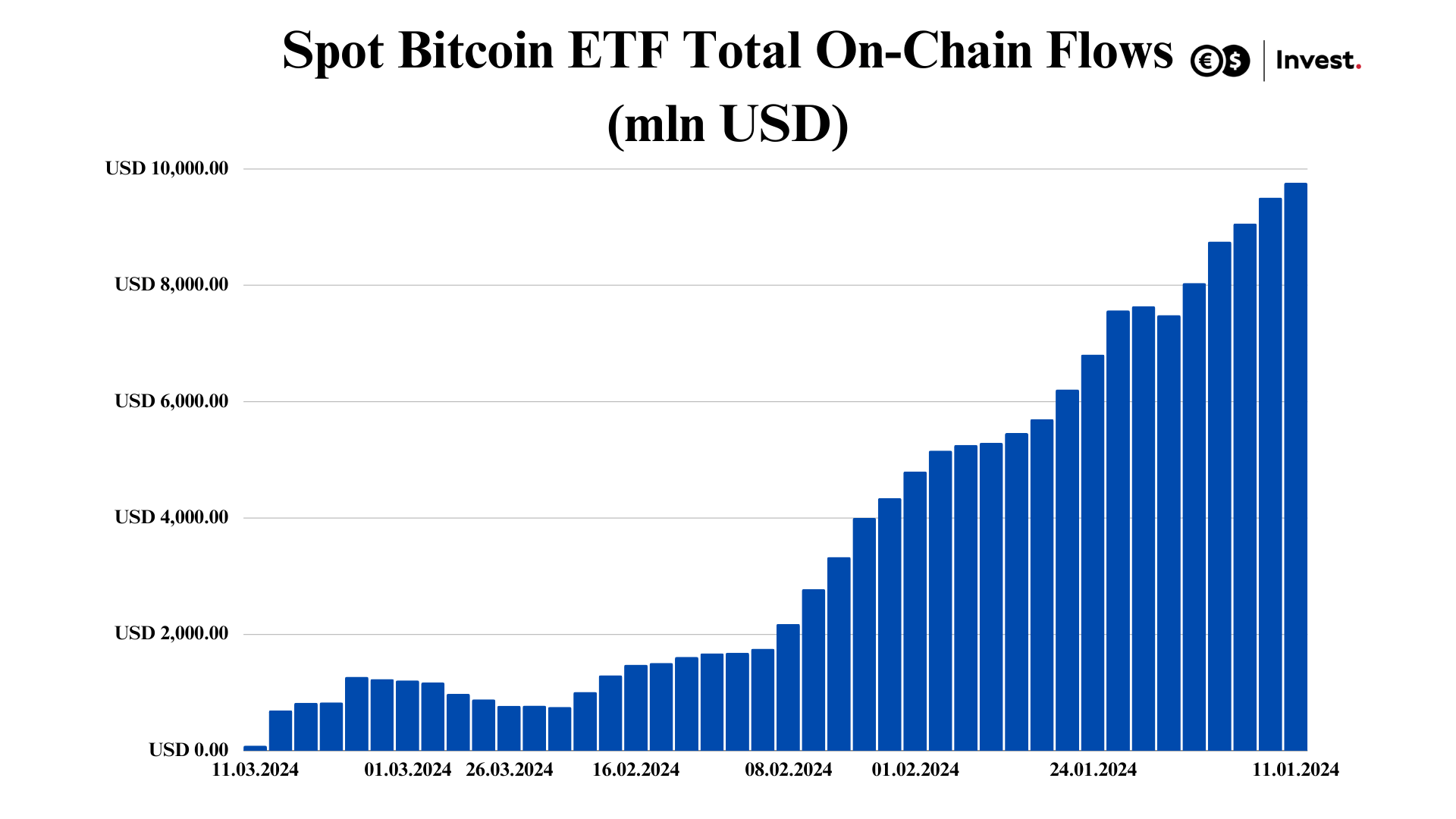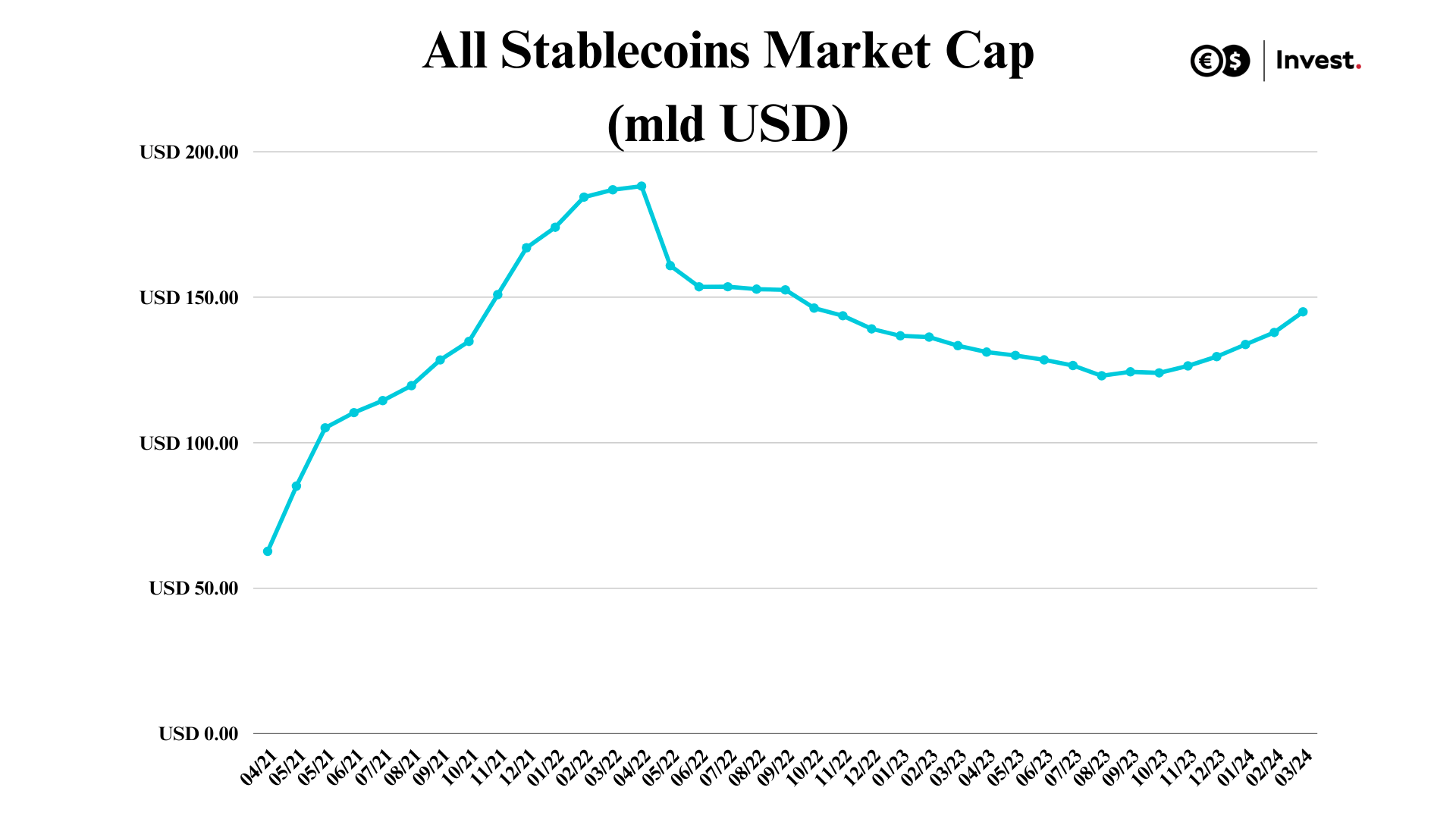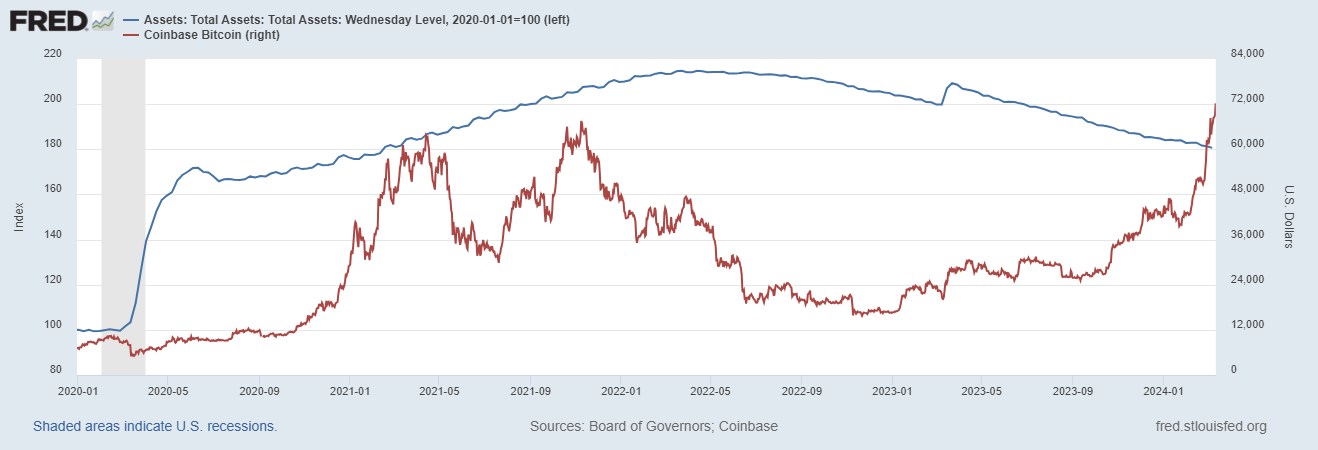Halving bitcoin, one of the most important events in the entire cryptocurrency market, falls this year on 19 April. It will take place amid the highly successful debut of bitcoin ETFs. The billions of dollars flowing into the ETFs are helping to set new historic highs in the price of the most popular cryptocurrency. Is the situation in this market really that optimistic? Or has the BTC price become detached from reality and its fundamentals? And how can you use the upcoming halving of the most important cryptocurrency to your own advantage?
Table of contents:
- What does the cryptocurrency market really look like?
- Has the bitcoin price lost touch with reality, become detached from its fundamentals?
- How can you use the upcoming halving of the most important cryptocurrency to your advantage?
What does the cryptocurrency market really look like?
The price of bitcoin has increased by 664% after the last halving (11 May 2020). This will now be the fourth full halving since the cryptocurrency's inception. We saw an impressive 5430% price increase after the first and 1163% after the second. It is worth recalling that halving on bitcoin takes place regularly every four years and is designed to reduce the supply of the cryptocurrency. So far, each time after halving has occurred, the price of bitcoin has dynamically increased over the next few months. Will this trend be repeated now? Before we try to answer this question, let us take a look at the current situation in the bitcoin market.
Since the beginning of the year alone, more than USD 9.7 billion of new funds have flowed into the cryptocurrency market from ETFs. Currently, ETFs hold as much as USD 53.7 billion in bitcoin, representing 3.8 per cent of all bitcoin. The popularity of such solutions may have exceeded market expectations, resulting in a dramatic increase in the price of bitcoin and...

Source: Conotoxia's own analysis, data from THE BLOCK
...what may seem like an interesting increase in the capitalisation of stablecoin, which is equivalent to the amount of money on stock exchanges. The reversal of more than 1.5 years of decline in stablecoin capitalisation coincides with the first announcements of the acceptance of bitcoin ETFs in the US. However, despite the cryptocurrency's strong gains, there is still 22.8 per cent less money relative to the last crypto bull market, which would suggest that it is now hard to talk about a bubble.

Source: Conotoxia's own analysis, Defilam data
The huge success of spot ETFs on bitcoin has prompted an influx of requests to create similar instruments on more cryptocurrencies. First in line seems to be ethereum, which has already gained 75% since the start of the year, ahead of a 70% rise on bitcoin. Trouble is, however, the Securities and Exchange Commission (SEC) seems reluctant to approve funds on yet another cryptocurrency. The deadline for the SEC's decision on the possible approval of ETFs on ethereum is scheduled for 23 May this year.
Has the bitcoin price lost touch with reality, become detached from its fundamentals?
The economic situation may have contributed to the recent bull market in cryptocurrencies. Low interest rates in the United States and pandemic stimulus programmes led to a significant flow of funds into the financial markets. It seemed that the success of cryptocurrencies was closely linked to the policies of central banks. Meanwhile, today, despite an unfavourable macroeconomic environment characterised by the highest interest rates in a decade and the sale of reserves by the Fed, bitcoin seems to be going its own way. This may confirm its strength and unique position, and the expected turnaround in central banks' policies, together with a further decline in inflation, may further drive BTC prices.

Source: Fred
However, the main problem in analysing bitcoin's fundamentals appears to be its utility, which has long lagged behind its investment value. Forecasting the exact price levels of bitcoin is therefore an extremely difficult task. One might even say impossible. Unlike other assets such as stocks or bonds, bitcoin does not generate direct cash flows for holders. For this reason, it is difficult to determine its real value. Therefore, it is better to focus on the price, which is the result of supply and demand, as well as the specific market conditions of the cryptocurrency itself.
As we pointed out earlier, the demand for cryptocurrencies is increasing dramatically, as manifested by the influx of new funds into the market, and the expectation of a halving of supply from cryptocurrency digging due to halving seems to have been priced in advance. As a result, we are seeing a massive increase in the price of cryptocurrency. Because of this, it seems that we cannot quite say that the bitcoin price has unstuck from its fundamentals. However, it is important to remember that we are only talking about the investment use of the cryptocurrency here. It does not appear that halving will have any impact on the wider use of bitcoin beyond investment.
How can you use the upcoming halving of the most important cryptocurrency to your advantage?
This raises the question of whether the halving effect is already factored into cryptocurrency prices, in line with the stock market's 'buy the rumours, sell the facts' premise. If everyone expects the price to rise after an event, many investors may purchase assets before the event occurs, which in turn may lead to a price decline when the event is realised. Precisely determining the effect of an event and the extent of any sell-off is very difficult. It seems that even if a sell-off does occur, the fundamentals of the cryptocurrency market indicate that it will not be an event with catastrophic consequences for the cryptocurrency market as a whole, which depends heavily on bitcoin. Therefore, long-term forecasts for the price of BTC seem optimistic, suggesting that its value could even exceed $100,000. And that could happen later this year!
Grzegorz Dróżdż, CAI MPW, Market Analyst of Conotoxia Ltd. (Conotoxia investment service)
Materials, analysis and opinions contained, referenced or provided herein are intended solely for informational and educational purposes. Personal opinion of the author does not represent and should not be constructed as a statement or an investment advice made by Conotoxia Ltd. All indiscriminate reliance on illustrative or informational materials may lead to losses. Past performance is not a reliable indicator of future results.
CFDs are complex instruments and come with a high risk of losing money rapidly due to leverage. 71.98% of retail investor accounts lose money when trading CFDs with this provider. You should consider whether you understand how CFDs work and whether you can afford to take the high risk of losing your money.


